Research Highlights
Research Highlights
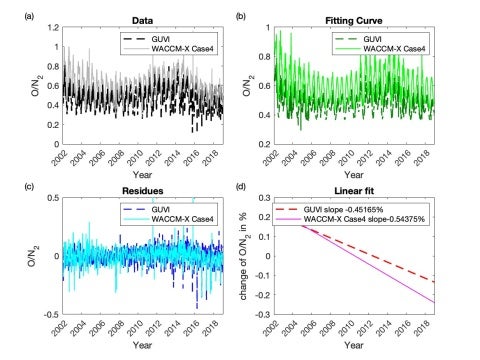
The Long-term Trend of Thermospheric Compositions from Whole Atmospheric Simulation and Satellite Observation
Chih-Ting Hsu, Wenbin Wang, Liying Qian, Ercha Aa, Joe Mclnerney, Shun-Rong Zhang, Yongliang Zhang, Anastasia Newheart, Dong Lin examine the long-term trend of column-integrated atomic oxygen to molecular nitrogen ratio, O/N2, in the upper atmosphere and investigates the cause of this long-term trend in O/N2.
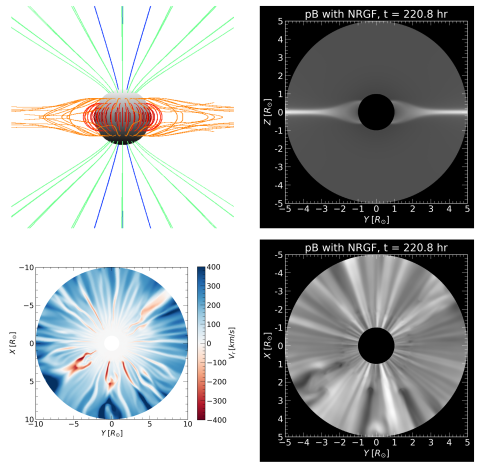
The Yin-Yang Magnetic Flux Eruption (Yin-Yang-MFE) Code: A Global Corona Magnetohydrodynamic Code with the Yin-Yang grid
Hongyang Luo and Yuhong Fan describe the numerical algorithms of a global magnetohydrodynamic (MHD) code utilizing the Yin-Yang grid, called the Yin-Yang Magnetic Flux Eruption (Yin-Yang-MFE) code, suitable for modeling the large-scale dynamical processes of the solar corona and the solar wind. It is a single-fluid MHD code taking into account the non-adiabatic effects of the solar corona, including the electron heat conduction, optically thin radiative cooling, and empirical coronal heating.
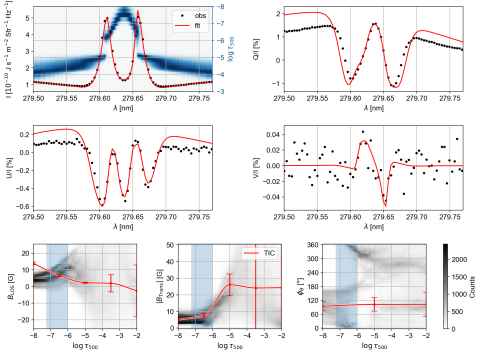
Using the Hanle Effect in Mg II k to Quantify the Open Flux above the Solar Poles
Ryan A. Hofmann, David Afonso Delgado, Rebecca Centeno, Roberto Casini, Matthias Rempel, Tanausu del Pino Aleman test the use of the Mg II resonant lines for measurement of the magnetic field at the top of the chromosphere of polar coronal holes (CHs).
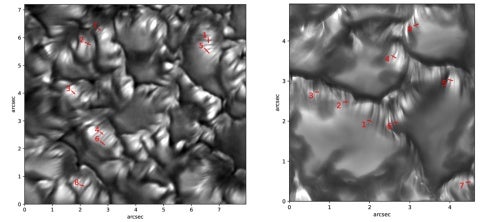
The Striated Solar Photosphere Observed at 0.″03 Resolution
Matthias Rempel, et al., analyze images acquired with the Visible Broadband Imager using the G-band channel to investigate the characteristics of fine-scale striations in the photosphere and compare them with state-of-the-art radiation-MHD simulations at similar spatial resolution. The striation patterns can be used as valuable diagnostics for studying the finest-scale structure of the photospheric magnetic field.
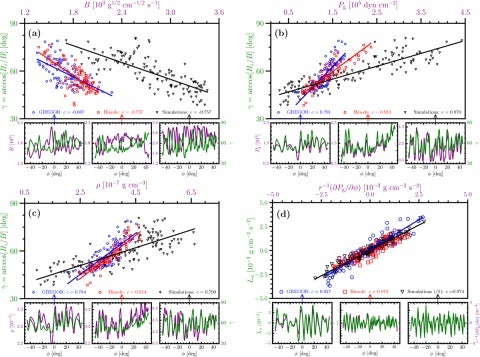
The role of the Lorentz force in sunspot equilibrium
J. M. Borrero; A. Pastor Yabar; M. Schmassmann; M. Rempel; M. van Noort; M. Collados apply the FIRTEZ Stokes inversion code to spectropolarimetric observations to infer the magnetic and thermodynamic parameters in two sunspots located at the disk center. Their research helps to explain why sunspots are such long-lived structures capable of surviving on the solar surface for days or even full solar rotations.
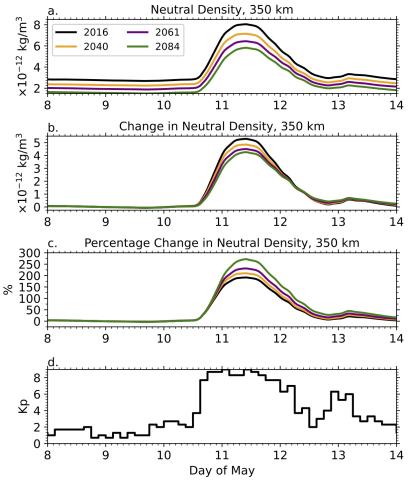
Impact of increasing greenhouse gases on the ionosphere and thermosphere response to a May 2024-like geomagnetic superstorm
N. M. Pedatella, H. Liu, H.-L. Liu, A. Herrington, and J. McInerney focus on understanding how changes in the background state of the upper atmosphere due to increases in CO2 alter the response of the ionosphere and thermosphere to geomagnetic storms finding that increasing levels of CO2 generally result in a weaker response of the ionosphere and thermosphere to geomagnetic storms in absolute terms, while their relative responses enhance at higher CO2 levels.
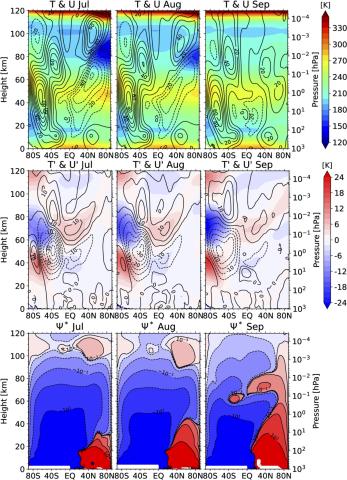
Seasonal and Interannual Variation of the Interhemispheric Coupling during the Austral Winter in WACCM6
Dai Koshin, Nick Pedatella, and Anne Smith describe the coupling between the winter stratosphere in the Southern Hemisphere and the northern upper mesosphere as seen in a long-term whole atmosphere model simulation revealing interannual variation is associated with the phase of the intraseasonal oscillation in the equatorial mesosphere and lower thermosphere.
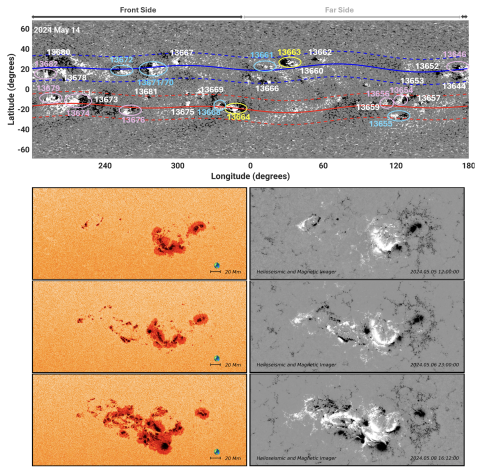
Mother's Day Superstorms: Pre- and Post-storm Evolutionary Patterns of AR 13664/8
Mausumi Dikpati, Marianna B. Korsos, Aimee A. Norton, Breno Raphaldini, Kiran Jain, Scott W. McIntosh, Peter A. Gilman, Andre S. W. Teruya and Nour E. Raouafi analyzed active region (AR) 13664 during a superactive emergence event. They conclude that this superstorm was caused by enhanced magnetic complexity occurring due to intricate interactions among multiple active regions emerging at nearly the same locations.

Multifluid equations for MHD
J. G. Lyon, V. G. Merkin, K. A. Sorathia, and M. J. Wiltberger describe a multifluid approach to observing ionized atoms in near-Earth space showing how changes in the magnetic field direction can act to accelerate ions along the field, and modeling how plasma waves behave in such a multifluid environment. They present results of a super-computer simulation of the near-Earth space, modeling the behavior of different plasma fluids and their interactions during a geomagnetic storm.